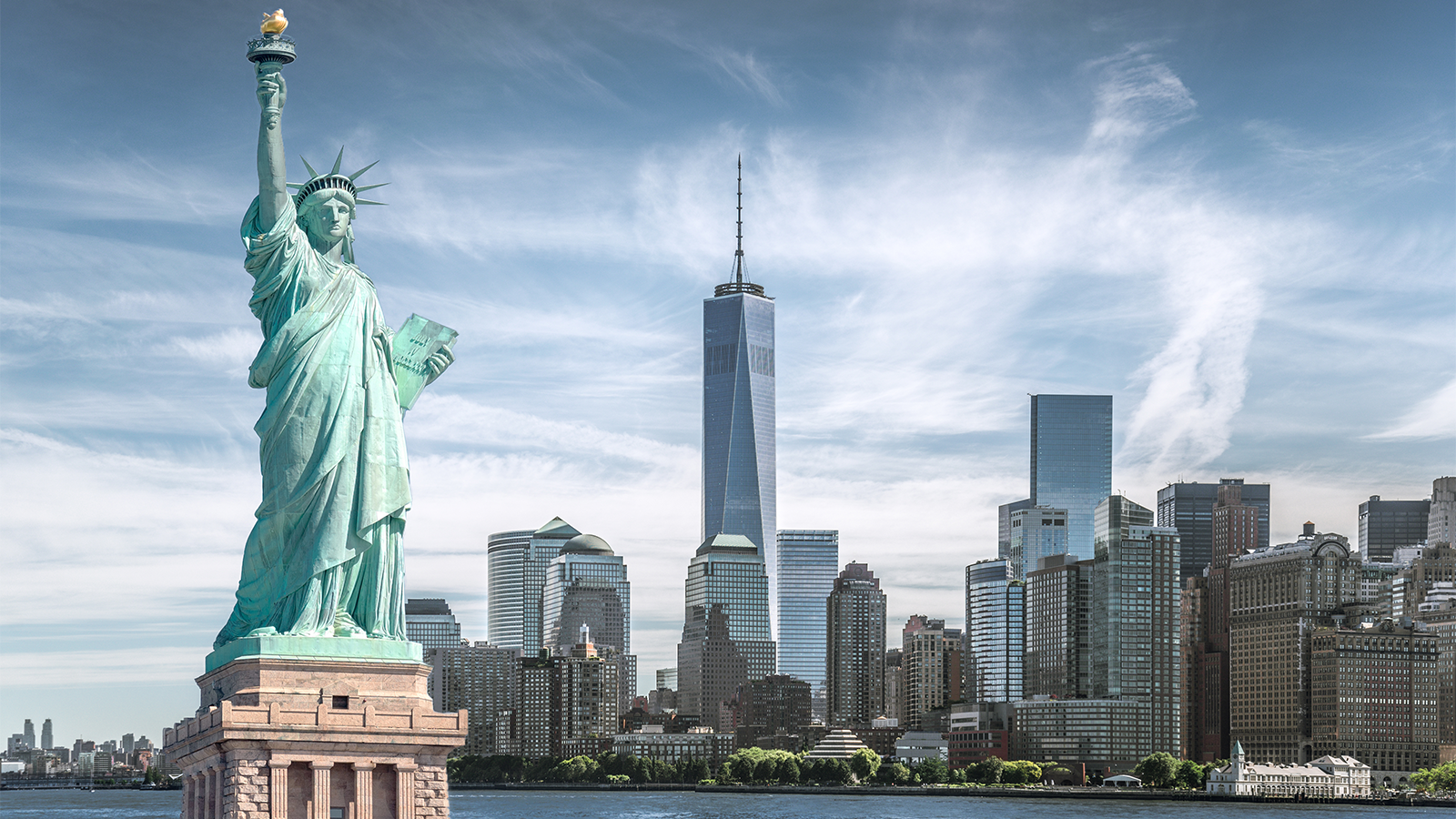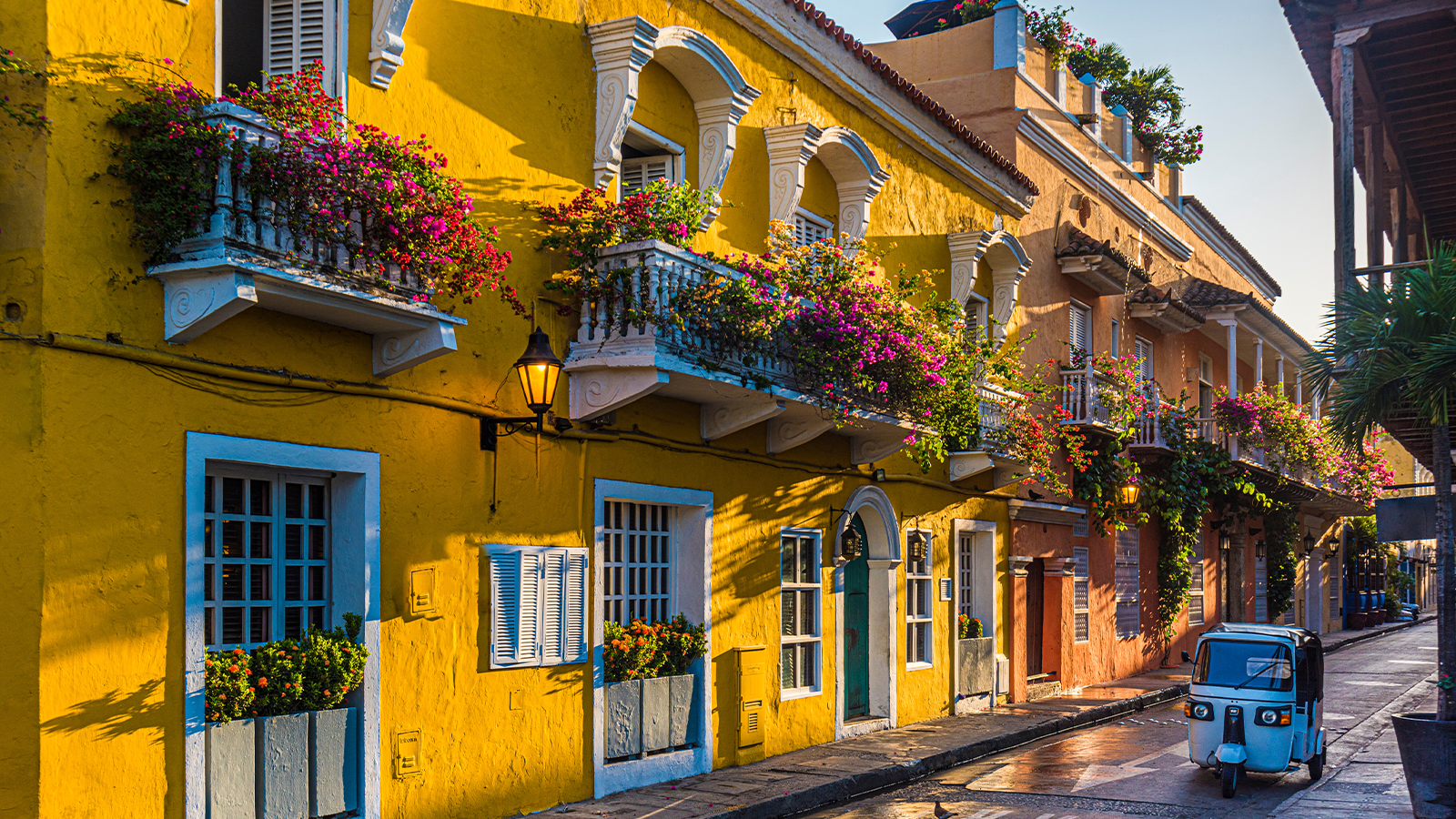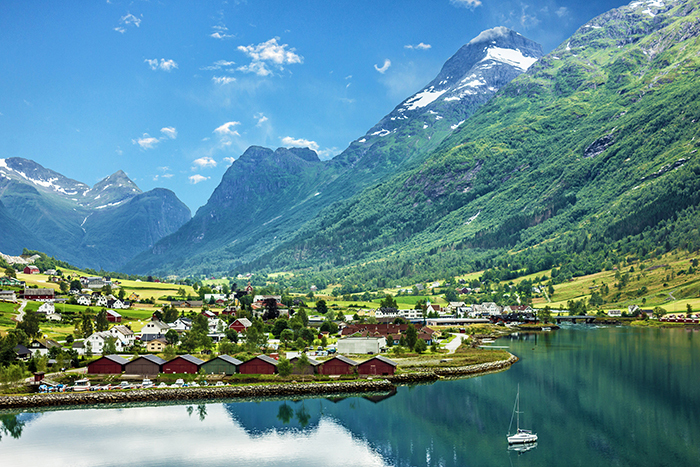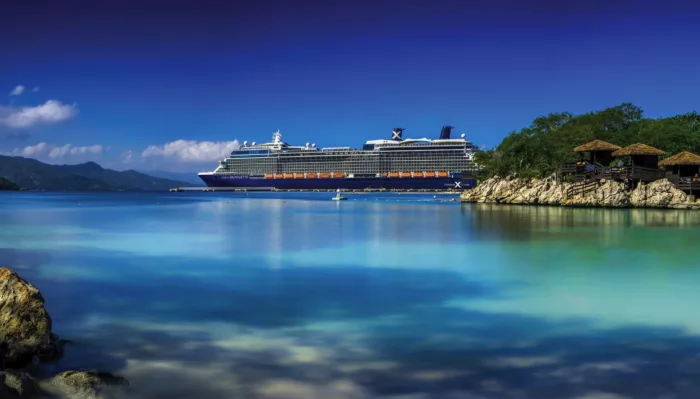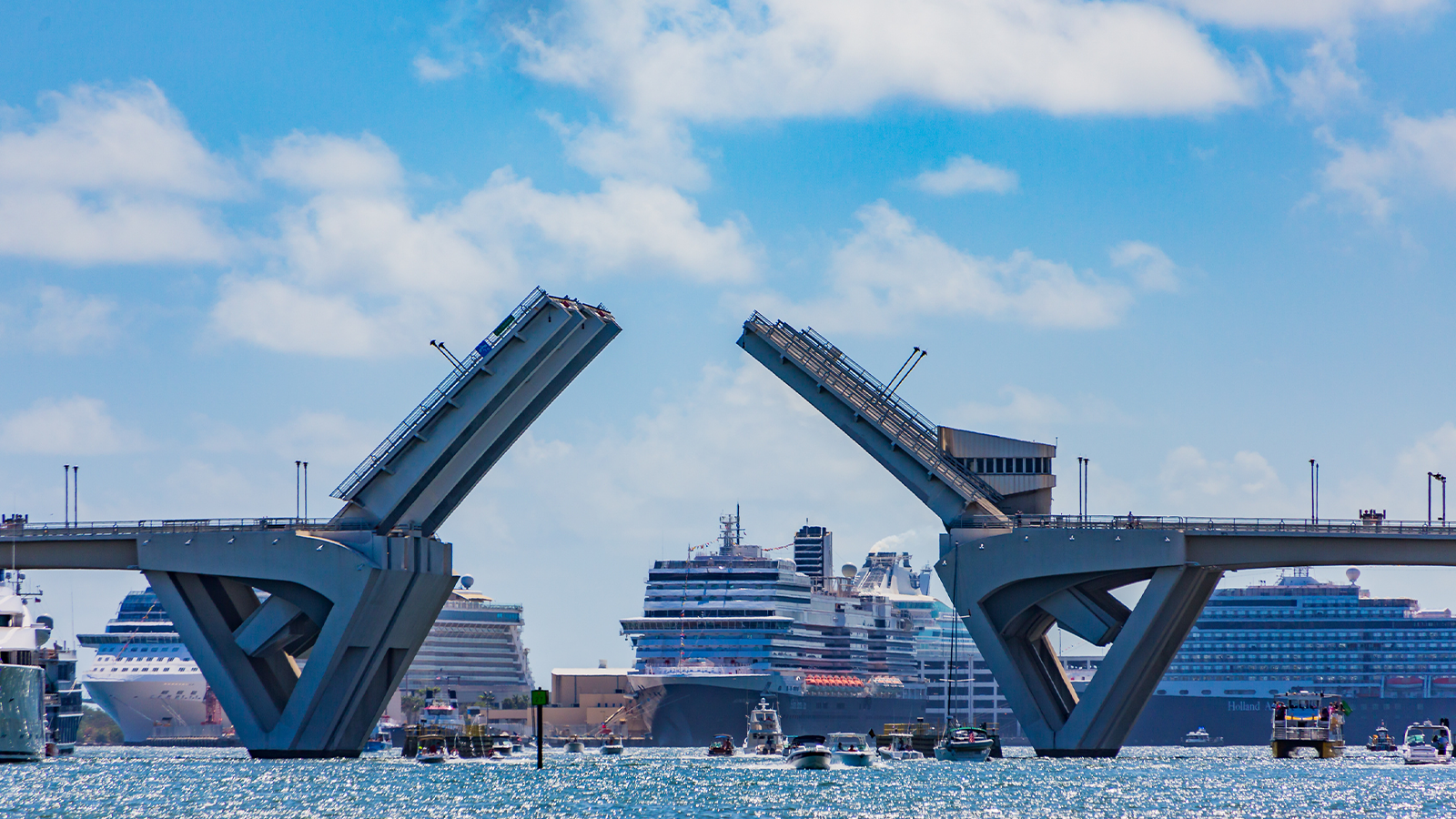
The devastating loss of RMS Queen Elizabeth
The demise of RMS Queen Elizabeth played out in full public view, costing Hong Kong business tycoon C.Y. Tung a large fortune, and robbing the world of a wartime hero and maritime icon
Unexpected feelings of grief often arise as we witness a famed ship leave us for good. The liner that tested our nerve to the full, broadcast live for all to witness, was the vast and noble ex-Cunard RMS Queen Elizabeth.
As the sister ship to RMS Queen Mary (both of which were built in Clydebank), public consensus dictates that RMS Queen Elizabeth shimmered in her sibling's celebrated shadow. However, the headlines would soon change focus, albeit for all the wrong reasons.
The manner in which RMS Queen Elizabeth was lost horrified countless spectators around the world. In Britain – the country from which this great vessel originated – children witnessed what was happening on the beloved Blue Peter programme. British adults, alongside Americans and Canadians, felt they were losing a proud part of their cultural history. To observe the event was to be left feeling crushed.
More Cunard history
- How RMS Queen Mary was saved from scrap
- Cunard's finest hour: RMS Carmania
- Pier 54: Cunard's cursed original New York pier
In the wake of what unfolded, there still resides a strong desire for answers over what happened to Cunard's RMS Queen Elizabeth. Despite more than five decades having passed since the demise of the legendary ocean liner, it is an incident that is remembered, mourned, and debated to this day – even though no culprit has even been charged for the deliberate inferno that raged that morning.
Among many, it is maritime enthusiasts, investigative journalists, and those who had a fond connection to RMS Queen Elizabeth who most eagerly want to understand exactly what happened – and why.
In piecing together the timeline, and understanding the politics that burned across the Kowloon peninsula, it appears that the liner was a victim of a turbulent time; the evidence of which is now buried beneath Container Terminal 9, following land reclamation efforts during the 1990s.

Hong Kong: A new dream for a world-renowned legend
It was the morning of January 9, 1972. Radiating as a neighbourhood that never truly sleeps, Hong Kong’s daily bustle simply rolled on from the day before. In Victoria Harbour, situated between Hong Kong Island and the northern Kowloon Peninsula, numerous small boats and cargo ships bustled back and forth on business.
Among them, anchored not far from Tsing Yi island, stood a ship of impressive proportions. Surrounded by tall skyscrapers on the opposing shores, the ship held her own well above the chaos of one of the world’s busiest ports. Only the night before had she been photographed glittering within a dazzling oriental sunset.
The ship wore fresh paint. Although carrying unfamiliar colours to her previously elegant mantra, beneath the new lineage that lingering heartbeat from a by-gone era still shone through. This was RMS Queen Elizabeth, in her new guise.
Hong Kong, with its unashamed, panoramic views has the capacity to impress almost everyone who visits. However, during a brief residence in the waters of Victoria Harbour, the hefty 83,000 tonne ship stole the show, provided one knew her incredible history.

Beyond Asia, the rest of the world recognised RMS Queen Elizabeth - a former Cunarder which had graced the seas on numerous transatlantic voyages - as the world’s largest passenger liner and a noteworthy wartime legend.
RMS Queen Elizabeth had been proudly marketed as one of Cunard’s ‘wonder ships’, working in tandem with her companion-ship RMS Queen Mary during both peacetime and war. Having transported over a million troops between them during the conflict – often stacked with a full battalion of 15,000 troops or more on each crossing – British Prime Minister Winston Churchill credited the Queens with shortening World War II by a year.
Despite her heroism, due to decreasing financial viability that resulted from competition with the airlines, Cunard finally retired their famous RMS Queen Elizabeth in 1968. Soon after, a subsequent business venture for the vessel in Fort Lauderdale, Florida completely failed and so, in 1970, the ship again found herself at auction.

The vessel was purchased by shipping magnate C.Y. Tung. His hope was that RMS Queen Elizabeth – who would be renamed the Seawise University – would provide an inspiring environment for those preparing for a maritime career. There were plans to have the ship operate as a floating educational campus once a comprehensive restoration had been completed. It was a £4.1-million gamble; the world's most expensive facelift.
Arriving in Hong Kong on July 15, 1971, the former ‘Pride of Britain’ underwent significant repair. Soon she sported fresh hues of white, orange and red. It was an ambitious but admirable dream.
On the morning of January 9, 1972, just as a celebratory reception was about to commence, it was a dream that was to devastatingly go up in smoke.

Whisps of trouble: There’s no smoke without fire
Even now, it is not entirely clear what time of morning the incident began, or where the first whisps of smoke emanated from on board RMS Queen Elizabeth.
For those sailing nearby, the first telltale signs of trouble came from the portholes. John Hudson, a chartered accountant working in Hong Kong, was out in a small craft showing friends and family the sights of Victoria Harbour.
As they meandered by, their attention was caught by smoke coming across the water. The grey trail began subtly but quickly thickened. John’s boat traced the smoke back to portholes on RMS Queen Elizabeth, where he was shocked to find smoke coming out from “not just one or two but almost all of them from stem to stern on one side”. Clearly, something was very wrong.
Strangely, it seemed to take agonisingly long for the developing situation to register with those on board. Several outside witnesses reported seeing smoke rise from the ship over the course of the morning. However to many contractors working on RMS Queen Elizabeth, the ship’s restaurant was utilised as a lunch venue as normal while work continued around the ship.
Given that the vessel had alarm systems throughout and the smell of smoke would have become ever more pungent, continuing to reside on the ship – while not reacting to the situation – seems a particularly odd thing to do.
This is ever more confusing when official reports on the incident state that the first fire alert on the ship was sounded at 11.20am, confirming awareness of a problem on board.
Reactions to that first fire alert or the sight of smoke were inconsistent across the vessel. Some attempts to control outbreaks of fire were undertaken with extinguishers but it seemed to take a long time before anyone realised just quite how much the fire was spreading throughout the ship.
Soon enough, several fireboats arrived as efforts began to evacuate 300 workmen and 250 crew. The number of evacuees would normally have been much larger but thankfully, many of the workmen had already left to obtain lunch on shore.
At 12.10pm, a loud explosion was heard by Police launch No. 10 as they approached to collect people from the ship. Flames and smoke grew increasingly rampant.
In addition to the workmen and crew, there were sixty guests in need of rescue. These included Tung Chee-hwa, son of C.Y. Tung, who had boarded earlier that morning to clink champagne glasses with other guests in celebration of the next phase of the Seawise University and her pending inaugural voyage. It was a journey that would never happen.
Instead, the world would watch in horror as a glorious and highly respected ship met an incredibly cruel end.

Disaster
By 1pm, a dozen police launches sat beneath RMS Queen Elizabeth. Among the local authorities, the disaster alarm had been raised.
Many of those on board climbed down to waiting boats on ropes. Around 10 others jumped into the sea from the ship’s windows or doors towards the stern. One man fell into a launch, breaking bones as he landed among urgent rescue efforts.
Nearby, as the chief fire officer of Hong Kong Island and the director of fire services attempted to close a starboard shell door on C deck, the sill of which was underwater, another loud explosion blasted open a fire door that had been closed over to help contain the blaze.
By 1.30pm, a scene of confusion had unfolded all around RMS Queen Elizabeth and fresh outbreaks of fire kept coming in. The fireboats poured an endless stream of seawater onto the ship as thick smoke poured out of portholes, doors and windows.

The dense plumes rose high enough to obscure the upper decks and bridge from sight, all the while developing a sickening yellow hue akin to human ash. No-one was now onboard. The fire rapidly possessed the ship until hope was lost. All that was human of RMS Queen Elizabeth was ravaged by the inferno.
Impressive works of art, sumptuous spaces and all the original fixtures that had been in place as Queen Elizabeth proudly launched the ship back in 1938 were disappearing.
Detailed wall panels that had been carefully stored for years in New York while RMS Queen Elizabeth had served heroically as a troopship were burning. Features that made up the background in photographs of many a celebrity on board were being lost. One of the ships that Churchill had said the world “… owes a debt that will not be easy to measure” was dying.
As the media gathered nearby and helicopters began to circle above, the iconic funnels of RMS Queen Elizabeth barely rose above the hellish gloom. For many, it was to watch history itself evaporate. It was an utterly devastating scene to observe, and one which echoed on as horrific in evocation.

Half-mast: The Queen is dead
The following day, as the fireboats in Victoria Harbour continued to douse the RMS Queen Elizabeth with water, British reporters caught C.Y. Tung as he prepared to fly out from London Heathrow to Hong Kong.
He looked shaken as he spoke to the press. “I feel so bad,” he said. “It is the only historical ship left. We restored it to her former glory. It makes me cry but I must be strong in my nerve.”
Back in Hong Kong, it was obvious the liner could no longer be saved. The worst of the fire appeared to have passed but, where there had once been a grand ship, was instead a charred and twisted mess.
The superstructure of RMS Queen Elizabeth had drastically fallen in. Floor upon floor had collapsed in on itself.
Like much of the ship, the bridge had burnt to a dark, rusty brown. The front of the bridge had curled around on itself while the windows looked like nothing more than small perforations in a camera film. The nearby mast still stood tall but almost everything beneath was unrecognisable.

Queen Elizabeth’s blackened davits hung stubbornly over the upper deck edges while a solitary lifeboat remained eerily halfway down the hull. The lifeboats had once been of assistance in a previous fire during 1946.
This blaze occurred when the ship was docked in Southampton. With some quick thinking, Commodore Bisset had asked firefighters to climb into lowered lifeboats before hoisting them up towards a fire on Promenade deck.
It had proved a successful solution. However, the events of 1972 were far grander in scale, and no sole order could save the day.
In Victoria Harbour, many of the ship’s doors, windows and portholes remained open. Not only had these openings helped fan the flames with sea air but they now also contributed to another problem that would befall the wreck.
Around 3pm on January 10, observers noted that the ship suddenly gave a large heave before settling again with a serious list to starboard. Firefighters who had re-boarded once the worst of the fire had been subdued were told to withdraw immediately. In their haste, they left behind much of their firefighting equipment.

At the same time, the fireboats were instructed to cease pumping water onto the wreck. Of the 9,300 tons of water that had been pumped towards the RMS Queen Elizabeth, a significant proportion now remained on board.
The constant downpour from the fireboats as well as all that had come in through the various openings around the ship had added up. With 5,000 tons of water swamping the vessel, several decks were completely flooded.
It was too late. RMS Queen Elizabeth had endured enough. The encroaching list, resulting from the sheer weight of water inside, partially sunk what remained of the great ship.
What remained above the waterline continued to smoulder for several days afterwards and went on to become a shipping hazard for a considerable time after.
Despite a marine inquiry, exactly how the fire had begun and spread so rapidly through RMS Queen Elizabeth remains unclear. Given that there were at least nine separate fires on board, the inquiry’s overall conclusion was that the disaster had been the result of sabotage, by perpetrators unknown.
If the theory is correct, RMS Queen Elizabeth was brutally wronged. As one would expect, those who had conspired against the grand historic liner ensured to ‘stay well clear when she sinks’.
Whatever the motive, Hong Kong lost a promising enterprise while many other nations lament the loss of one of the greatest ships to ever have existed.



